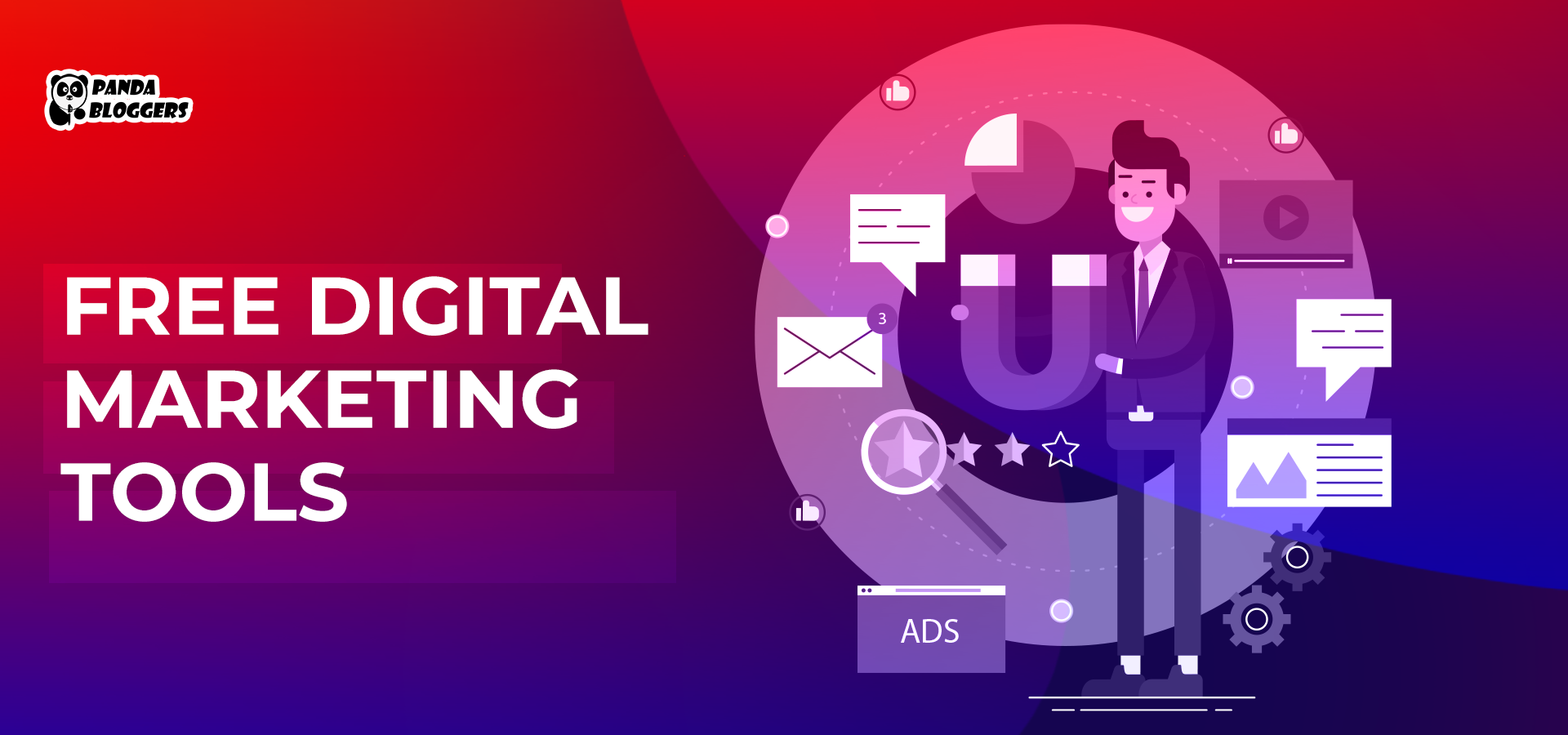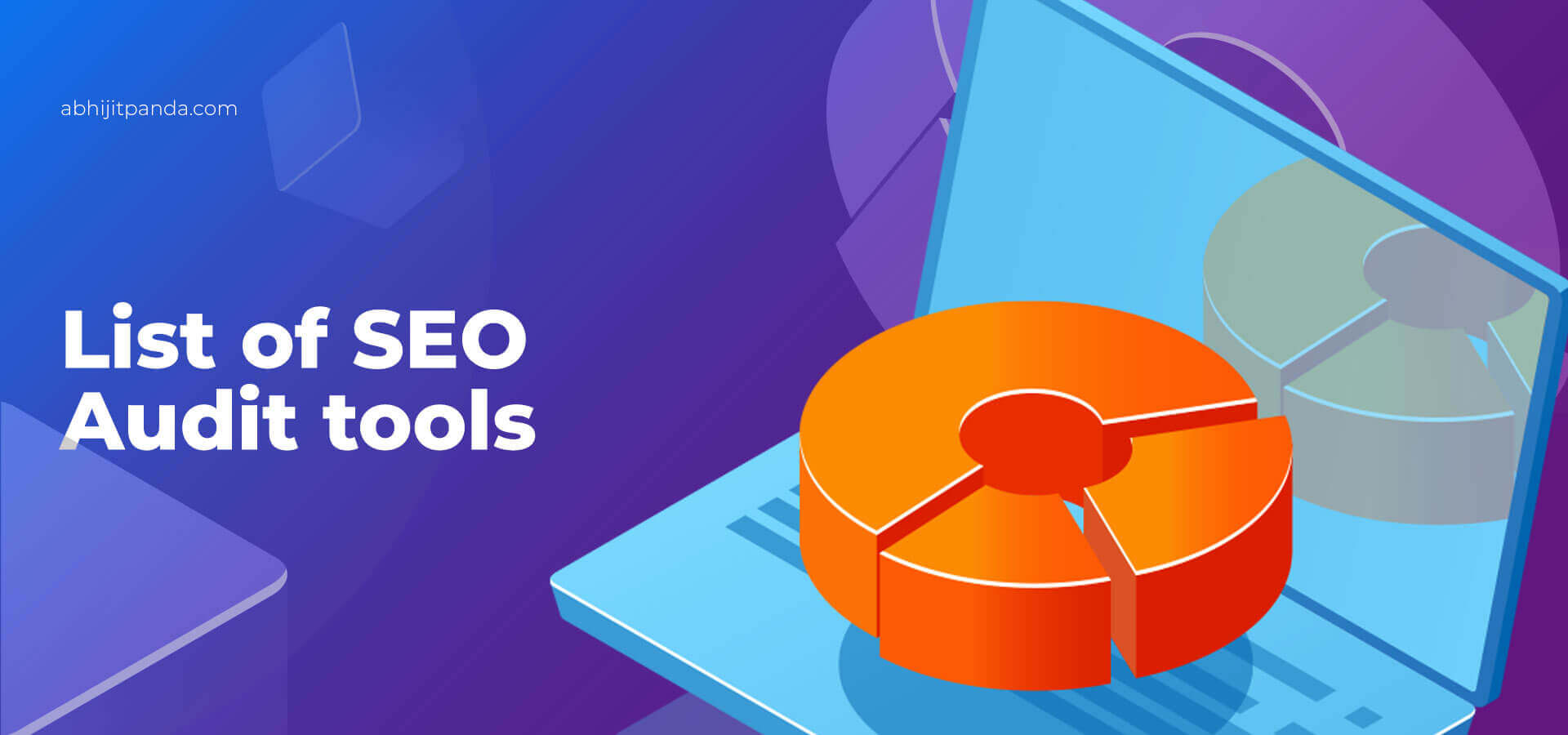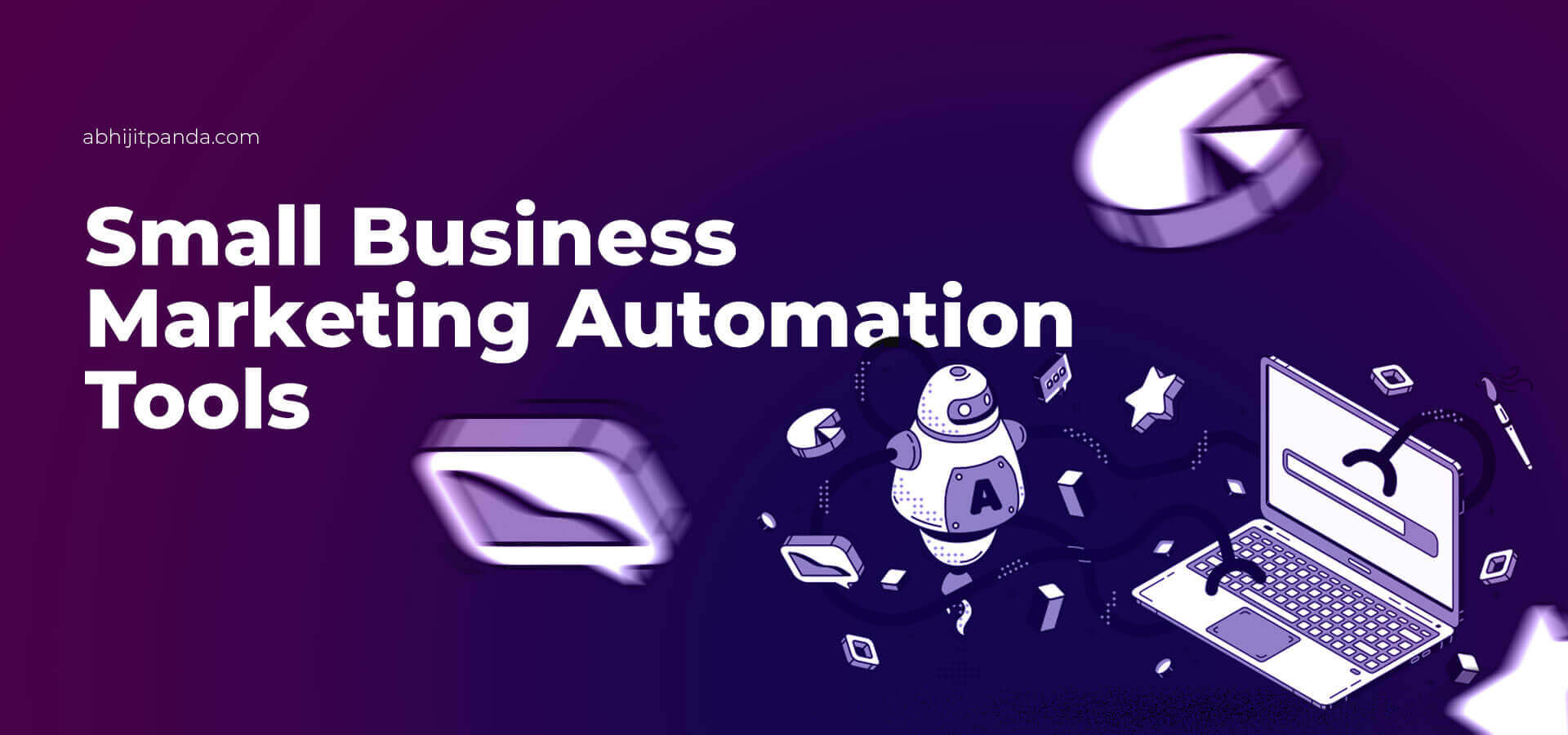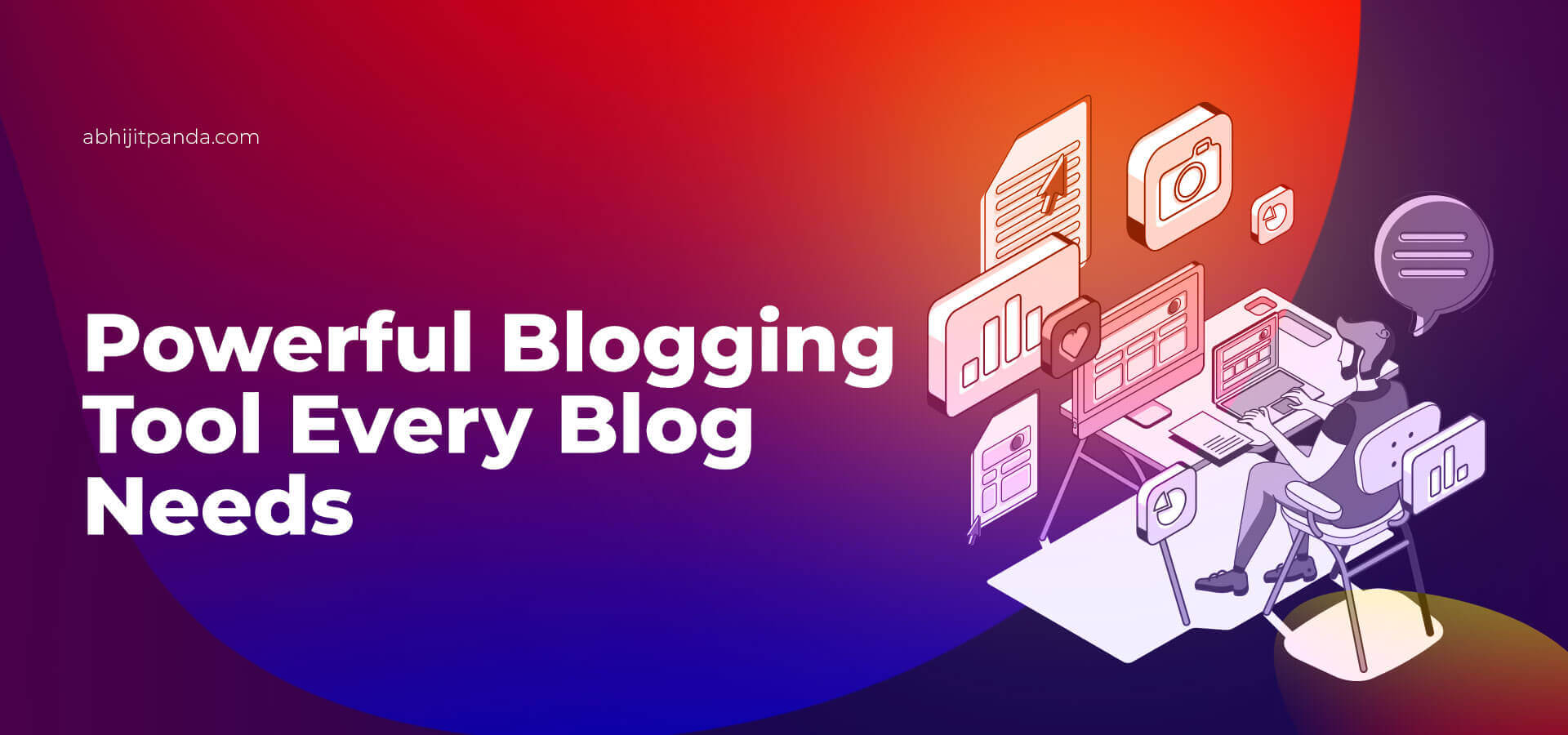 Free Digital Marketing Tools
Free Digital Marketing Tools
Along with curbing costs, digital marketing tools help businesses boost customer engagement and conversations by making data-driven decisions. Premium software for digital marketing automation comes with robust features and advanced data analytics. However, small businesses and startups, unlike large companies, look for alternatives to premium digital marketing software due to budgetary constraints. In this blog, we discuss free digital marketing tools that help entrepreneurs strengthen their online presence, increase website traffic, and drive sales conversions.
10 Free Digital Marketing Tools Popular with Small Businesses and Startups
Google Analytics
The free analytics tool provided by Google helps marketers understand customers across devices and platforms. Marketers use Google Analytics to understand how customers interact with a website or mobile app throughout the buying journey.
At the same time, they determine if the users are converting or not by taking specific actions like purchases, downloads, sign-ups, and contact form submissions. The visitor data and data-driven insights shared by the software help businesses optimize marketing campaigns and content by making informed decisions.
Google Search Console
Marketers use Google Search Console to boost a website’s search engine ranking by using tools and generating reports. The free digital marketing tool highlights the keywords or queries searchers use to find a website.
At the same time, it measures the website’s search performance using key metrics like clicks, impressions, search position, and clickthrough rate. Marketers can further use the software to boost a website’s search engine ranking by identifying and fixing problems like crawling, indexing, and mobile usability.
Hotjar (Basic Edition)
Hotjar is developed as a user behavior analytics tool. It helps marketers understand how visitors interact with the business website by showing numbers and sharing data. Marketers use the visual insights shared by the software to detect the areas on a page that need improvement.
Also, marketers can record sessions to understand how visitors interact with the website based on clicks, scrolls, mouse movements, and hesitation points. At the same time, they can use Hotjar to assess website performance by conducting polls and surveys. The basic edition of Hotjar allows marketers to track up to 35 user sessions per day.
Ubersuggest
This free tool is used widely by marketers for making and improving SEO and content strategy. Ubersuggest drives search engine optimization (SEO) campaigns by making keyword suggestions and generating content ideas. In addition to discovering long-tail keyword opportunities, the online tool evaluates keywords using parameters like search volume, organic search difficulty, and paid search difficulty.
Likewise, it identifies top-performing content for a specific keyword based on estimated traffic and social media shares. Marketers can further use Ubersuggest to conduct competitor research, backlink analysis, and site audits. However, they must upgrade to the premium version to perform site audits frequently and access additional details.
AnswerThePublic
The search listening tool helps marketers discover what real people are searching for using search engines and social networks. The search insights provided by AnswerThePublic help digital marketers refine their SEO and content marketing strategies. Marketers can get keyword suggestions by entering a brand, product, or topic.
Likewise, he can organize the keywords using criteria like questions, prepositions, and comparison. Hence, it becomes easier for digital marketers to find question-based and longtail keywords for SEO campaigns and ideas to generate content that resonates with the target audience. However, the free edition of AnswerThePublic allows marketers to conduct limited free searches per day. They have to upgrade to a premium edition to increase the number of users and searches per day.
Buffer (Free Edition)
Buffer is a widely used social media management tool. It enables marketers to publish, schedule, and analyze content on several social networking platforms. Marketers can use a single dashboard to manage content across social networking platforms like LinkedIn, Facebook, Instagram, Google My Business, YouTube, TikTok, and X (formerly Twitter).
Hence, it becomes easier for them to keep content consistent across social media. At the same time, Buffer helps them track social media engagement and measure post performance by generating reports and sharing data-driven analytics. The free edition of Buffer allows digital marketers to schedule 10 posts and get 100 ideas per channel using a single user account.
MailChimp (Free Edition)
MailChimp is popular with brands as an all-in-one digital marketing platform. However, it is popular with brands as an email marketing tool. The software enables marketers to send the right message to every customer at the right time through automation. It simplifies email creation by providing customizable templates. Likewise, it uses AI algorithms to ensure the email is delivered to the recipient at the right time.
However, MailChimp offers useful features like website development, content creation, lead generation, and social media marketing. Marketers can track sales and campaign performance in real time by generating reports and using data-driven insights. The free edition of MailChimp allows them to send messages to 50 contacts while getting email support for the first 30 days.
CoSchedule
CoSchedule streamlines social media marketing campaigns by creating centralized calendars. Marketers use this digital marketing tool to create social, content, and agency calendars. At the same time, the marketing suite provided by CoSchedule enables them to gain real-time visibility into projects, social networks, campaigns, and events without using additional tools.
The centralized calendar helps marketers track when a piece of content – blog, social media posts, or newsletters – will go live. Marketers can further reschedule content posting and automate routine tasks using the same software. The integration with WordPress makes it easier for them to write, edit, publish, and schedule blog posts directly. They can further streamline omnichannel digital marketing campaigns by creating tailored workflows.
Canva (Free Version)
Canva is not designed specifically as a digital marketing tool. However, it is used widely by digital marketers for creating visual content. Marketers can create a variety of graphics – posters, presentations, logos, videos, and social media posts – despite no prior design experience. Canva simplifies graphic design by providing templates, video tools, and animation tools.
Marketers can further access a large library of stock images, illustrations, videos, and graphics. At the same time, the editing tools provided by Canva make it easier for them to tailor the visual content according to their precise digital marketing needs. However, they must upgrade to Canva Pro to access premium stock images, videos, and other visual elements.
Similarweb
Similarweb is hugely popular with digital marketers as a competitive analysis tool. It helps marketers analyze and assess a competitor’s website using metrics like traffic source, audience geography, digital performance, and audience behavior. At the same time, marketers can use the software to compare a business website to several competitors.
The comparison helps marketers boost digital marketing campaigns by optimizing content and user engagement. Similarweb further facilitates top-ranking keyword discovery and keyword competition analysis by sharing SEO insights. However, the free edition of Similarweb allows marketers to access basic traffic and engagement data about a website. They must upgrade to Similarweb Pro to generate custom reports, get industry insights, and access advanced features.
Quick Comparison Table for Free Digital Marketing Tools:
A side-by-side comparison helps simplify decision-making. Here’s a snapshot of popular tools and their free plan highlights:

Digital Marketing Tool Stack Examples: Sample Combinations for Common Needs
If you’re unsure which tools to start with, here are some proven combinations for different types of marketers and businesses:
-
For New Bloggers or Small Brands
Use Canva for visual creation, Buffer for scheduling social posts, Google Analytics for tracking traffic, and Google Alerts for monitoring trends in your niche.
-
For Content-Focused Marketers
Combine Grammarly for error-free writing, MarketMuse for content research and audits, and AnswerThePublic to discover trending topics your audience cares about.
-
For Automation-Oriented Startups
Use HubSpot Marketing Hub for lead capture and chatbots, OneSignal for push notifications, and Mailchimp for basic email automation and campaign scheduling.
-
For SEO-Heavy Creators
Opt for Yoast for on-page SEO, Ubersuggest for keyword ideas and backlink analysis, and Google Analytics for tracking performance and visitor behavior.
How to Choose the Right Tool for Your Needs
With so many free digital marketing tools available, the real challenge is choosing the ones that actually fit your business goals. Here’s a simple framework to guide your selection:
-
Define Your Marketing Goals
Start by identifying what you need the tool for. Is it content creation, analytics, social media management, SEO, or email automation? Knowing your objectives will help you avoid unnecessary tools.
-
Check Compatibility and Integration
A great tool becomes even more powerful when it integrates smoothly with your existing platforms. Look for options that work seamlessly with your email service provider, CRM, or social platforms.
-
Consider Usability and Learning Curve
Tools like Canva and Buffer are simple to use, while advanced platforms like HubSpot or Ahrefs may take time to master. Choose based on your team’s comfort level and willingness to learn.
-
Evaluate Free Plan Limitations
Every free tool has limitations, whether it’s restricted analytics, limited users, or fewer features. Understand these constraints to avoid roadblocks as you scale.
-
Prioritize Scalability
Pick tools that grow with your business. A platform with flexible pricing tiers will save you time and effort in the long run.
Tips to Maximize Free Tools
Free tools can deliver powerful results if you know how to use them effectively. Here are some pro tips to make the most of your toolkit:
-
Layer Tools for Greater Value
Pair analytics tools like Google Analytics with heatmap platforms to combine quantitative and qualitative insights.
-
Automate Alerts
Set up alerts for keywords, competitors, or industry trends to keep your strategy ahead of the curve.
-
Rotate or Alternate Tools
When you hit usage limits on a tool, switch between accounts or tools instead of upgrading immediately.
-
Use Trials Strategically
Plan content sprints or major campaigns during free trial periods to maximize access to premium features.
-
Educate Your Team
Provide internal training or cheat sheets to help your team use each tool efficiently and consistently.
Conclusion
Free digital marketing tools help businesses automate routine and repetitive tasks by overcoming cost constraints. However, the free versions of premium digital marketing software have their pros and cons. For instance, they offer basic functions, impose usage caps, and do not feature advanced data analytics. Hence, small businesses and startups boost digital marketing automation by integrating multiple tools. Likewise, entrepreneurs upgrade to paid editions of these tools as their businesses grow.









Leave a Reply